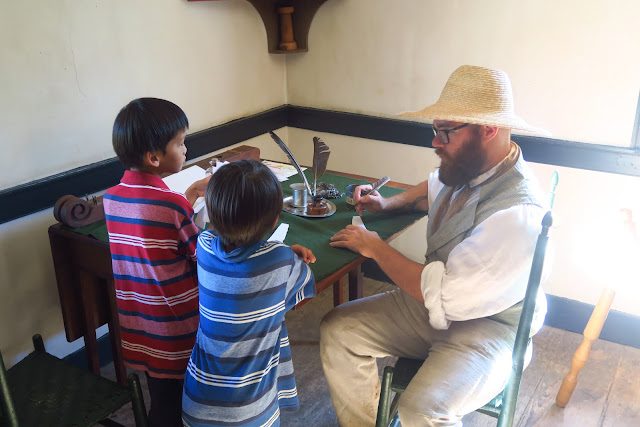What would you do?
You live a fairly comfortable life. You work very hard, and you get to live in a fairly comfortable house. But it does not belong to you. And it never will. That’s the law. It’s been that way, and that’s the way it’ll always be. Then you hear about an opportunity to go away to a distant land. You know it’ll likely be very hard; and you may not live as comfortably as you’re living now. But you know that the land will be yours. For you and your descendants. Forever.
When the Irish left for America in the 1700s, that was the dilemma that they faced. And a number of them chose to leave their fairly comfortable life in Ireland in hope of a better life in the newly discovered land of America. Life was hard, and the immigrants had to build their houses from scratch, but if they succeeded, they would be able to live in a place that they could call their own.
That was what we learnt from the Frontier Culture Museum, an excellent museum which chronicles the life of early immigrants through living history displays. We visited actual buildings from the 1600s to the 1800s, and talked to “interpreters” dressed in period clothing. The Irish “blacksmith” was for instance forging a nail from a furnace while the late 1700s’ American “settler” was grinding corn to make beer. Each of these interpreters provided a rich account of the circumstances which induced Europeans to go to the New World and also how the early American settlers lived and what they did to survive.
That’s truly the basis of the “American Dream”.
The Previous Page - Tides of War. Read here.
What's Next? Of Resilience & Fortitude - The Appalachian Trail. Read here.
You live a fairly comfortable life. You work very hard, and you get to live in a fairly comfortable house. But it does not belong to you. And it never will. That’s the law. It’s been that way, and that’s the way it’ll always be. Then you hear about an opportunity to go away to a distant land. You know it’ll likely be very hard; and you may not live as comfortably as you’re living now. But you know that the land will be yours. For you and your descendants. Forever.
When the Irish left for America in the 1700s, that was the dilemma that they faced. And a number of them chose to leave their fairly comfortable life in Ireland in hope of a better life in the newly discovered land of America. Life was hard, and the immigrants had to build their houses from scratch, but if they succeeded, they would be able to live in a place that they could call their own.
That was what we learnt from the Frontier Culture Museum, an excellent museum which chronicles the life of early immigrants through living history displays. We visited actual buildings from the 1600s to the 1800s, and talked to “interpreters” dressed in period clothing. The Irish “blacksmith” was for instance forging a nail from a furnace while the late 1700s’ American “settler” was grinding corn to make beer. Each of these interpreters provided a rich account of the circumstances which induced Europeans to go to the New World and also how the early American settlers lived and what they did to survive.
 |
| An "Irish blacksmith" demonstrating how to forge a nail. Our boys were so enthralled they have asked to visit again - months after the experience. |
 |
| A "German immigrant" demonstrating the use of looms, typical of the craftsmen of that era. |
 |
| Our boys learning how to write with a quill from an "American settler" in the 1820s. |
It was really poignant for us the learn that the land of America was founded on a hope that things could get better if you chose to seize the opportunities you had.
That’s truly the basis of the “American Dream”.
The Previous Page - Tides of War. Read here.
What's Next? Of Resilience & Fortitude - The Appalachian Trail. Read here.

Comments
Post a Comment